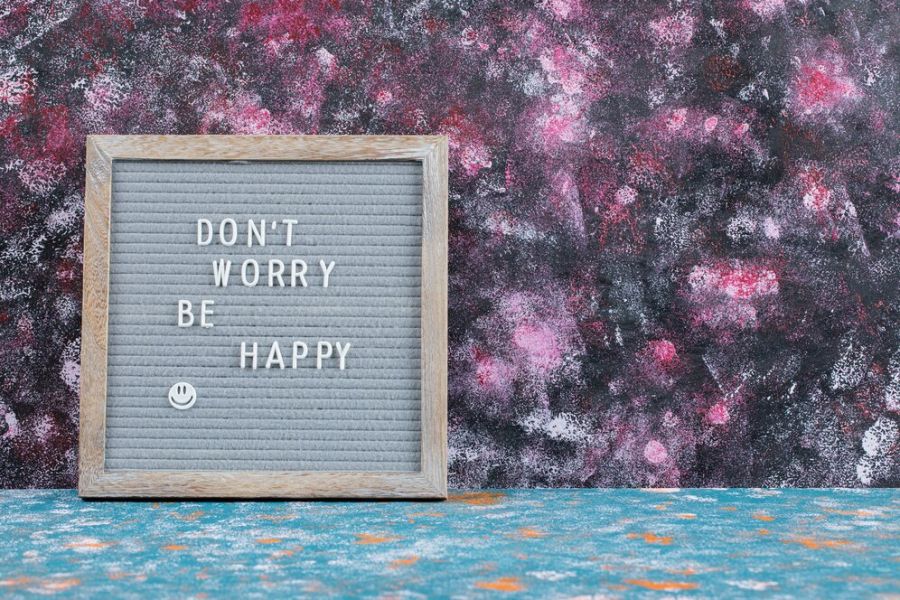Your writer’s desk is more than just a workspace—it’s the place of creativity and productivity. A well-organised and inspiring desk fuels efficiency, minimises distractions, and unlocks your creative potential. Let’s explore 10 must-have essentials that every writer needs to create the perfect workspace for focus and innovation.

A writer’s desk is more than just a piece of furniture; it is a sanctuary, a workspace, and a source of inspiration. Whether you are a novelist, journalist, poet, or content creator, the environment in which you write plays a crucial role in shaping your productivity and creativity.
A well-organised and thoughtfully curated writer’s desk can make the difference between a day filled with flowing ideas and one plagued by distractions.
In this article, we explore the essentials that every writer’s desk should have to foster both productivity and creativity.
10 writer’s desk essential for productivity and creativity
1. A comfortable and ergonomic chair
 The foundation of any productive writer’s desk is a comfortable chair. Writing often involves long hours of sitting, and an uncomfortable chair can lead to fatigue, back pain, and a lack of focus. Invest in an ergonomic chair that supports good posture and allows you to work for extended periods without discomfort. A chair with adjustable height, lumbar support, and padded seating can make a world of difference. After all, a writer’s desk is only as good as the comfort it provides.
The foundation of any productive writer’s desk is a comfortable chair. Writing often involves long hours of sitting, and an uncomfortable chair can lead to fatigue, back pain, and a lack of focus. Invest in an ergonomic chair that supports good posture and allows you to work for extended periods without discomfort. A chair with adjustable height, lumbar support, and padded seating can make a world of difference. After all, a writer’s desk is only as good as the comfort it provides.
2. A reliable writing tool
 At the heart of every writer’s desk is the tool used to bring ideas to life. For some, this may be a laptop or computer, while others may prefer the tactile experience of pen and paper. Whichever medium you choose, ensure it is reliable and suited to your writing style. If you use a laptop, consider a stand to elevate the screen to eye level, reducing strain on your neck. For those who prefer writing by hand, keep a selection of high-quality pens, pencils, and notebooks on your writer’s desk. The act of writing should feel seamless, allowing your thoughts to flow without interruption.
At the heart of every writer’s desk is the tool used to bring ideas to life. For some, this may be a laptop or computer, while others may prefer the tactile experience of pen and paper. Whichever medium you choose, ensure it is reliable and suited to your writing style. If you use a laptop, consider a stand to elevate the screen to eye level, reducing strain on your neck. For those who prefer writing by hand, keep a selection of high-quality pens, pencils, and notebooks on your writer’s desk. The act of writing should feel seamless, allowing your thoughts to flow without interruption.
3. Adequate lighting
 Good lighting is essential for any writer’s desk. Poor lighting can cause eye strain, headaches, and a general sense of discomfort, all of which can hinder creativity. Natural light is ideal, so position your writer’s desk near a window if possible. However, for evening or early morning writing sessions, invest in a desk lamp with adjustable brightness. A warm, soft light can create a cosy atmosphere, while a brighter light can help maintain focus during intensive work.
Good lighting is essential for any writer’s desk. Poor lighting can cause eye strain, headaches, and a general sense of discomfort, all of which can hinder creativity. Natural light is ideal, so position your writer’s desk near a window if possible. However, for evening or early morning writing sessions, invest in a desk lamp with adjustable brightness. A warm, soft light can create a cosy atmosphere, while a brighter light can help maintain focus during intensive work.
4. Inspirational items
 A writer’s desk should be a place that sparks creativity. Surround yourself with items that inspire you, whether it’s a favourite book, a piece of art, or a collection of quotes. These objects can serve as reminders of your goals and passions, helping to reignite your imagination when you feel stuck. Some writers keep a vision board on their desk, filled with images and words that reflect their aspirations. Others may prefer a minimalist approach, with just a few meaningful items to keep the space clutter-free. The key is to create an environment that resonates with you personally.
A writer’s desk should be a place that sparks creativity. Surround yourself with items that inspire you, whether it’s a favourite book, a piece of art, or a collection of quotes. These objects can serve as reminders of your goals and passions, helping to reignite your imagination when you feel stuck. Some writers keep a vision board on their desk, filled with images and words that reflect their aspirations. Others may prefer a minimalist approach, with just a few meaningful items to keep the space clutter-free. The key is to create an environment that resonates with you personally.
5. Organisational tools
 Clutter can be a significant distraction, so keeping your writer’s desk organised is crucial. Use drawers, trays, or containers to store pens, notebooks, and other supplies. A tidy workspace allows you to focus on your writing without being overwhelmed by mess. Consider using a bulletin board or wall-mounted shelves to keep important notes, deadlines, or ideas within sight. For digital organisation, ensure your computer files are well-structured and backed up regularly. An organised writer’s desk is a productive writer’s desk.
Clutter can be a significant distraction, so keeping your writer’s desk organised is crucial. Use drawers, trays, or containers to store pens, notebooks, and other supplies. A tidy workspace allows you to focus on your writing without being overwhelmed by mess. Consider using a bulletin board or wall-mounted shelves to keep important notes, deadlines, or ideas within sight. For digital organisation, ensure your computer files are well-structured and backed up regularly. An organised writer’s desk is a productive writer’s desk.
6. A timer or clock
 Time management is a vital skill for writers, and having a timer or clock on your writer’s desk can help you stay on track. The Pomodoro Technique, which involves working in focused intervals followed by short breaks, is a popular method for boosting productivity. A simple timer can help you implement this technique, ensuring you make the most of your writing sessions. Alternatively, a clock can help you keep an eye on the time, especially if you have deadlines to meet.
Time management is a vital skill for writers, and having a timer or clock on your writer’s desk can help you stay on track. The Pomodoro Technique, which involves working in focused intervals followed by short breaks, is a popular method for boosting productivity. A simple timer can help you implement this technique, ensuring you make the most of your writing sessions. Alternatively, a clock can help you keep an eye on the time, especially if you have deadlines to meet.
7. A comfortable writing surface
 The surface of your writer’s desk should be spacious enough to accommodate your writing tools, notebooks, and any reference materials you may need. A cluttered desk can stifle creativity, so ensure you have enough room to work comfortably. If space is limited, consider a desk with built-in storage or a foldable design. The surface should also be at a comfortable height, allowing you to write without straining your wrists or arms.
The surface of your writer’s desk should be spacious enough to accommodate your writing tools, notebooks, and any reference materials you may need. A cluttered desk can stifle creativity, so ensure you have enough room to work comfortably. If space is limited, consider a desk with built-in storage or a foldable design. The surface should also be at a comfortable height, allowing you to write without straining your wrists or arms.
8. Reference materials
 Every writer’s desk should have easy access to reference materials. This could include a dictionary, thesaurus, style guide, or any books relevant to your current project. Having these resources within reach can save time and prevent interruptions to your workflow. For digital writers, bookmarking useful websites or using reference apps can serve the same purpose. The goal is to minimise distractions and keep your focus on the task at hand.
Every writer’s desk should have easy access to reference materials. This could include a dictionary, thesaurus, style guide, or any books relevant to your current project. Having these resources within reach can save time and prevent interruptions to your workflow. For digital writers, bookmarking useful websites or using reference apps can serve the same purpose. The goal is to minimise distractions and keep your focus on the task at hand.
9. A notebook or journal
 Even in the digital age, a notebook or journal is an indispensable tool for any writer’s desk. It provides a space for jotting down ideas, brainstorming, or sketching out outlines. Many writers find that the act of writing by hand can unlock creativity in ways that typing cannot. Keep a dedicated notebook on your writer’s desk for spontaneous thoughts or observations that could later develop into full-fledged projects.
Even in the digital age, a notebook or journal is an indispensable tool for any writer’s desk. It provides a space for jotting down ideas, brainstorming, or sketching out outlines. Many writers find that the act of writing by hand can unlock creativity in ways that typing cannot. Keep a dedicated notebook on your writer’s desk for spontaneous thoughts or observations that could later develop into full-fledged projects.
10. Personal touches
 Finally, don’t forget to add personal touches to your writer’s desk. This could be a plant, a photograph, or a small trinket that holds sentimental value. These items can make your workspace feel uniquely yours, creating a sense of comfort and belonging. A plant, for example, can add a touch of nature and improve air quality, while a photograph can serve as a reminder of loved ones who support your writing journey.
Finally, don’t forget to add personal touches to your writer’s desk. This could be a plant, a photograph, or a small trinket that holds sentimental value. These items can make your workspace feel uniquely yours, creating a sense of comfort and belonging. A plant, for example, can add a touch of nature and improve air quality, while a photograph can serve as a reminder of loved ones who support your writing journey.
Creating the perfect writer’s desk
The perfect writer’s desk is one that reflects your individual needs and preferences. It should be a space where you feel inspired, focused, and at ease. By incorporating the essentials outlined above, you can create a workspace that enhances both your productivity and creativity. Remember, your writer’s desk is not just a place to work; it is a reflection of your identity as a writer. Take the time to curate it thoughtfully, and it will reward you with countless hours of fruitful writing.
Final thoughts
A writer’s desk is more than just a functional workspace; it is a hub of creativity and productivity. By equipping it with the right tools and personal touches, you can create an environment that supports your writing process and inspires you to achieve your goals.
Whether you prefer a minimalist setup or a desk filled with inspirational items, the key is to design a space that works for you. After all, the writer’s desk is where ideas come to life, and with the right essentials, it can become your greatest ally in the journey of writing.

Shikha Negi is a Content Writer at ztudium with expertise in writing and proofreading content. Having created more than 500 articles encompassing a diverse range of educational topics, from breaking news to in-depth analysis and long-form content, Shikha has a deep understanding of emerging trends in business, technology (including AI, blockchain, and the metaverse), and societal shifts, As the author at Sarvgyan News, Shikha has demonstrated expertise in crafting engaging and informative content tailored for various audiences, including students, educators, and professionals.


























